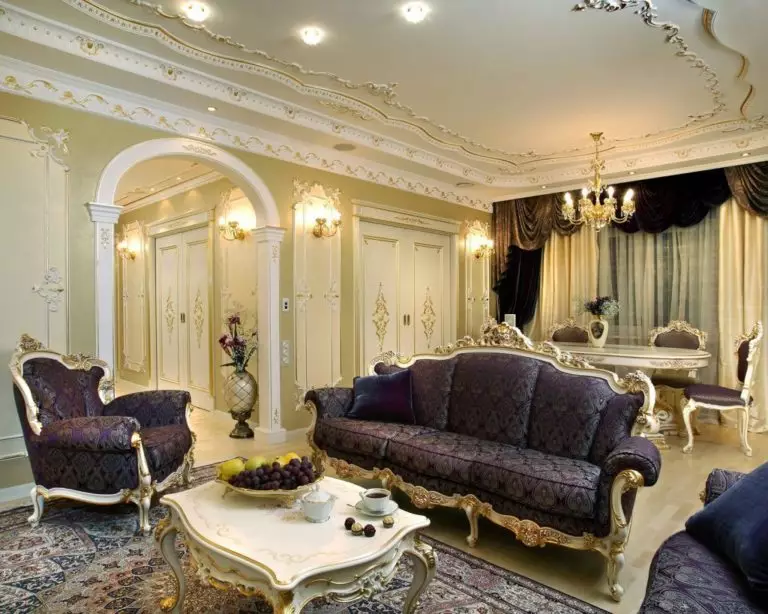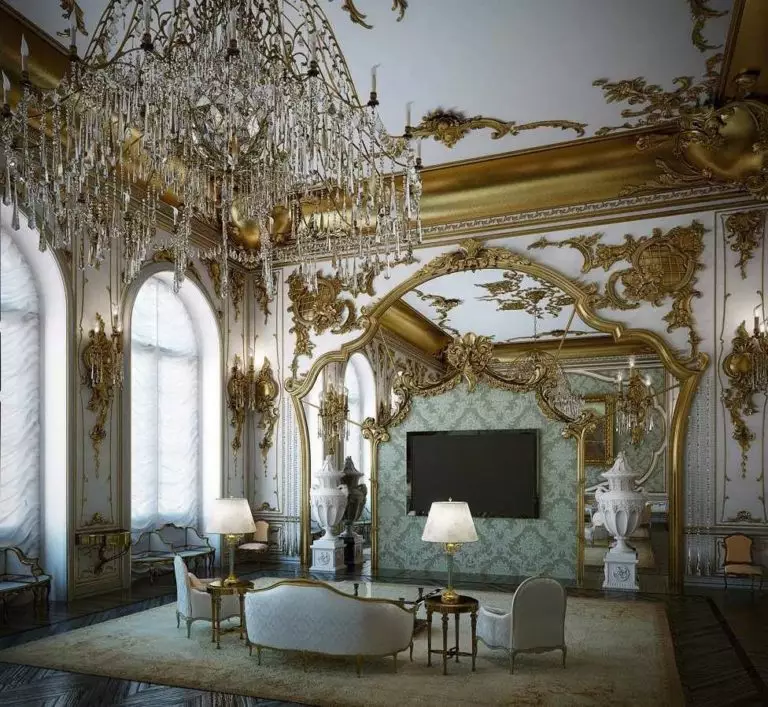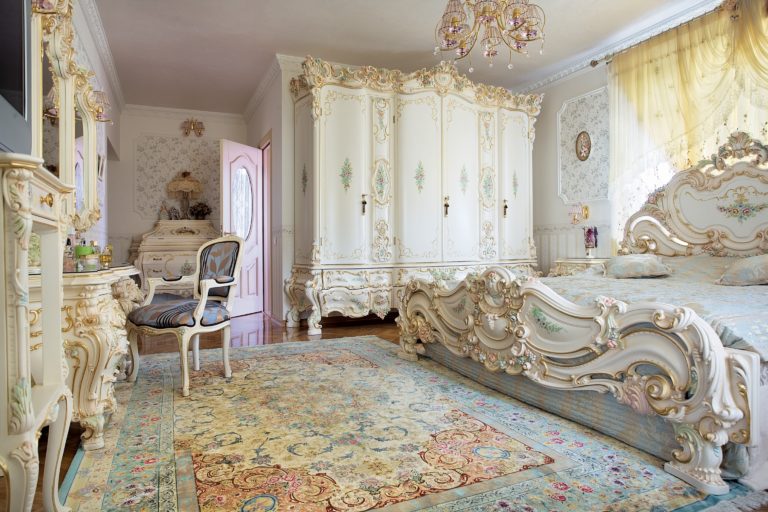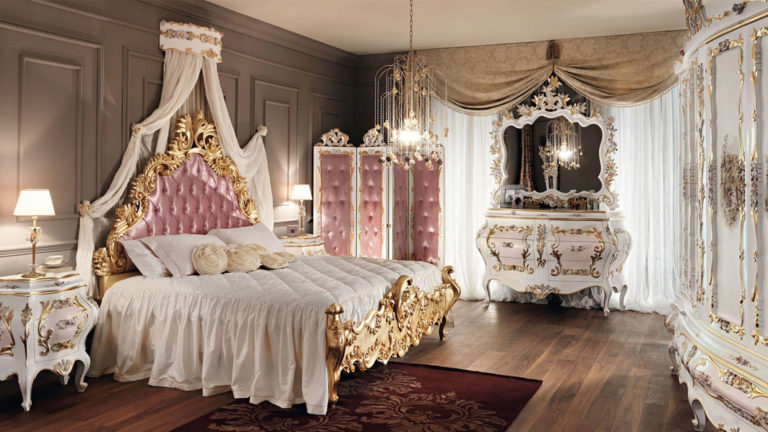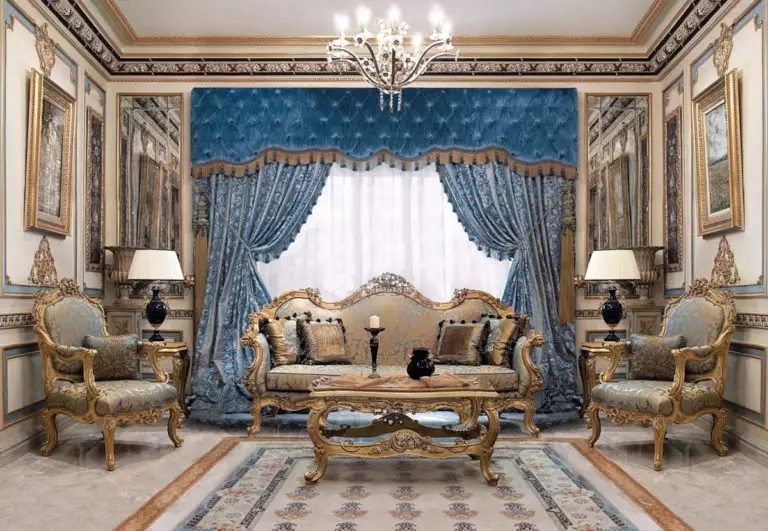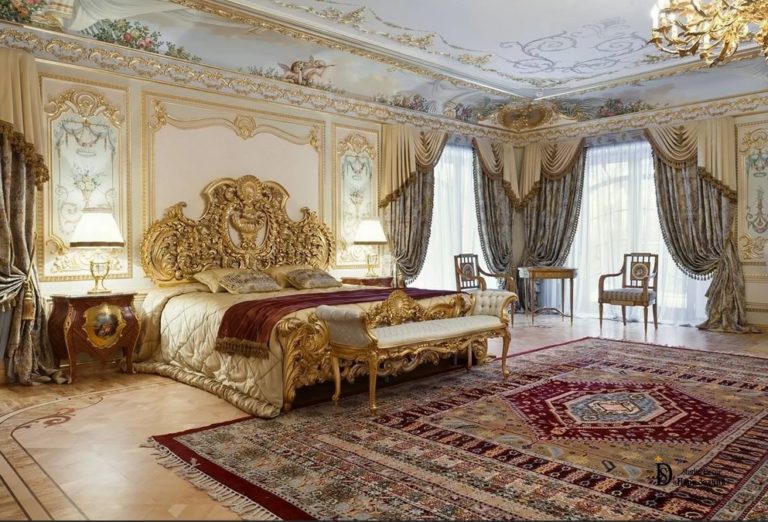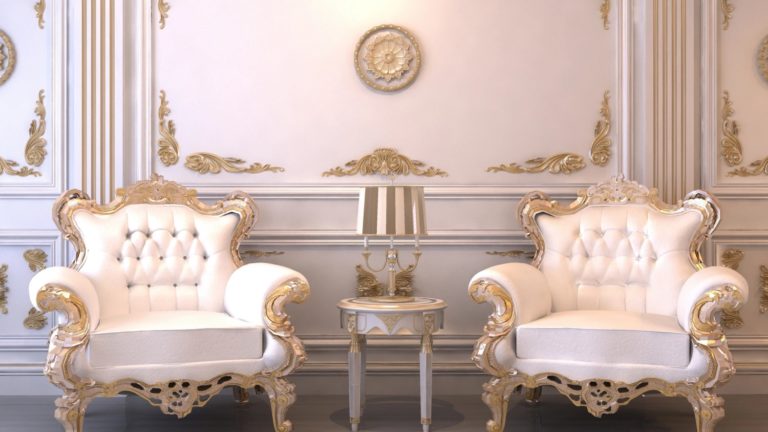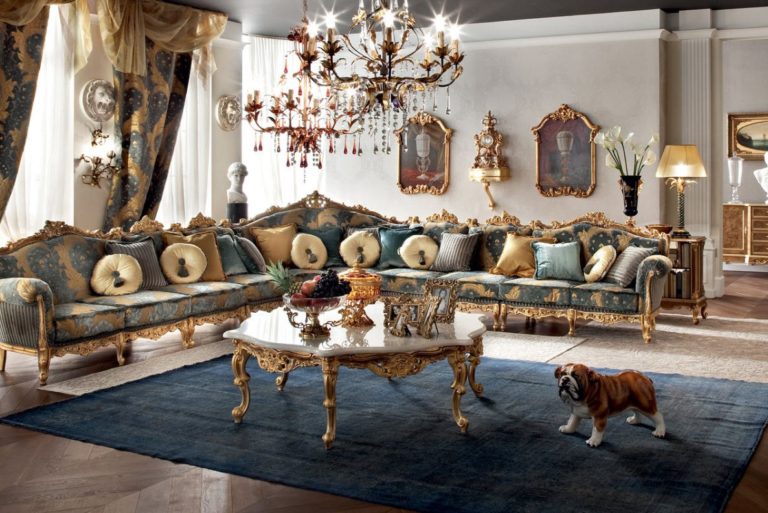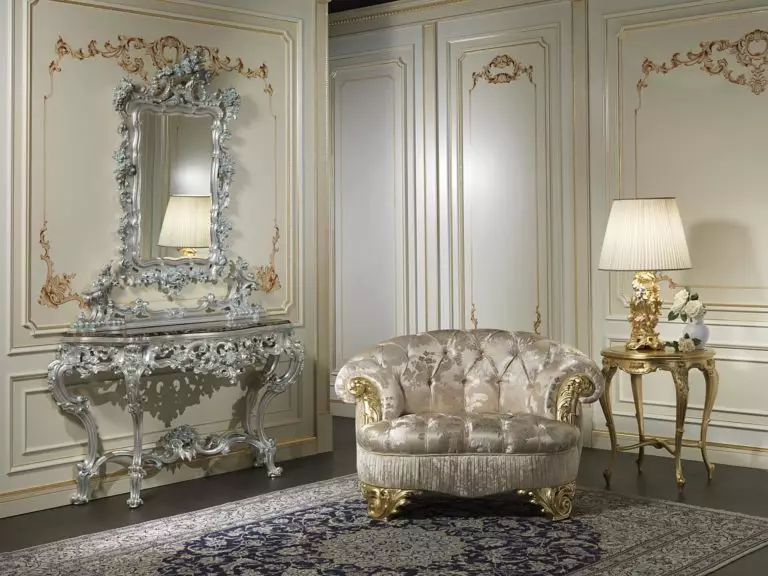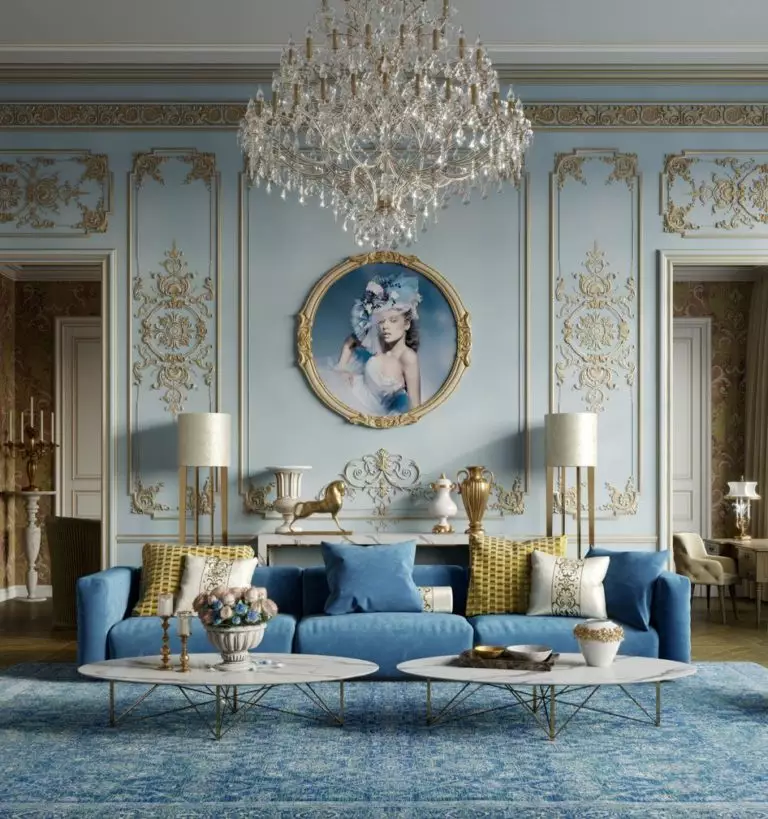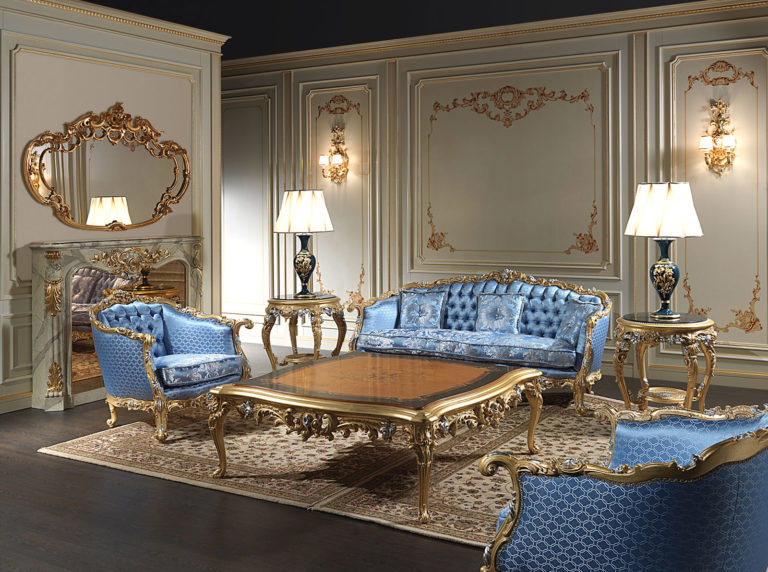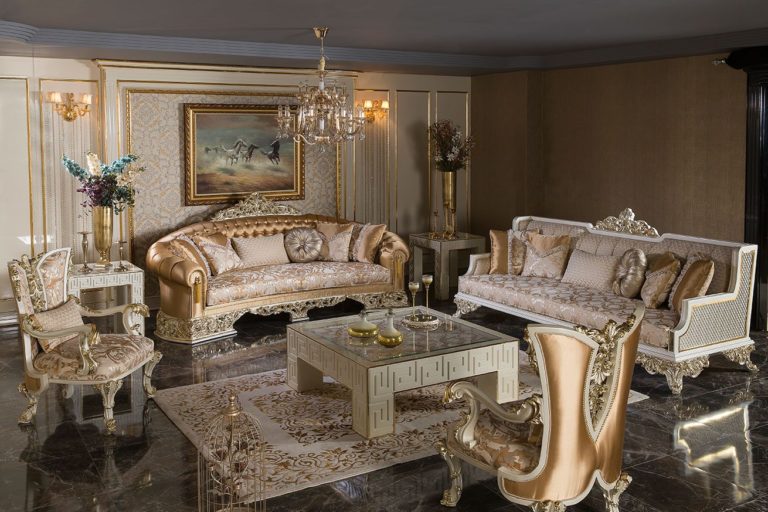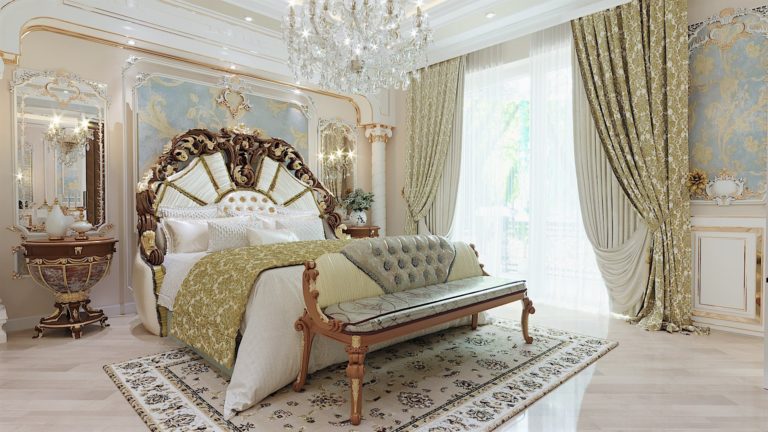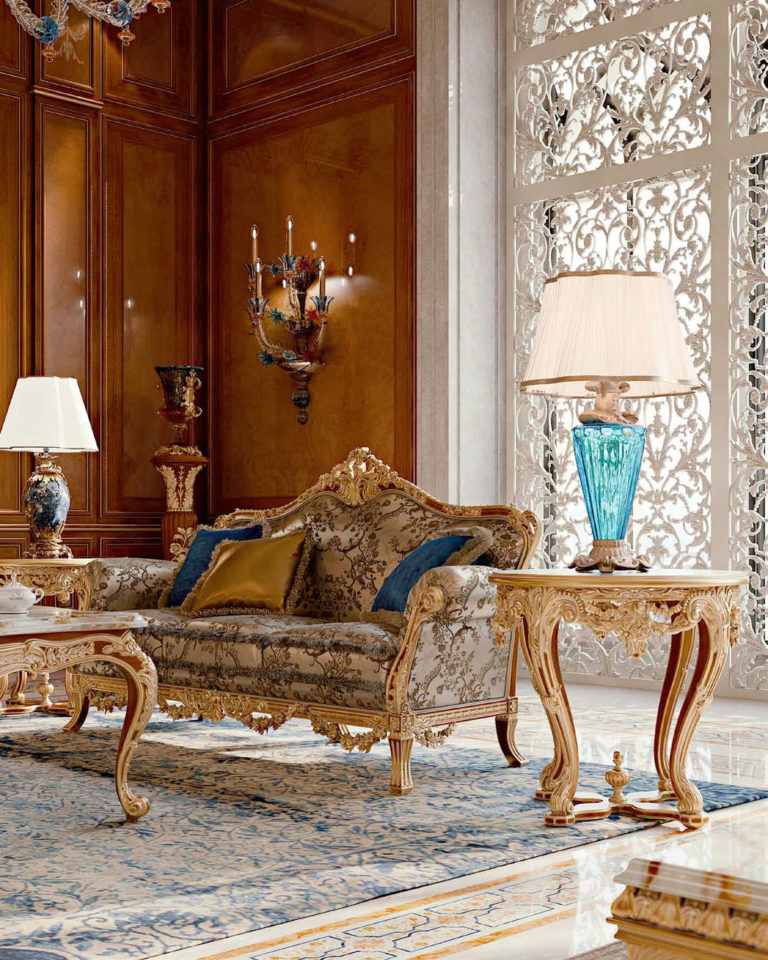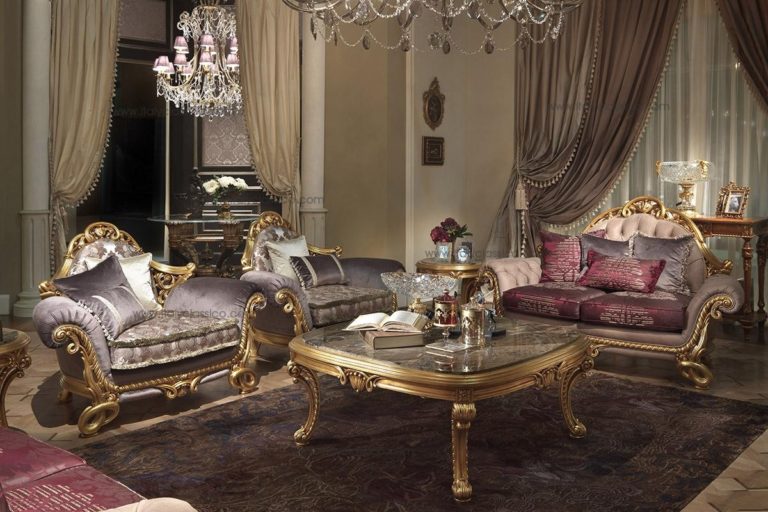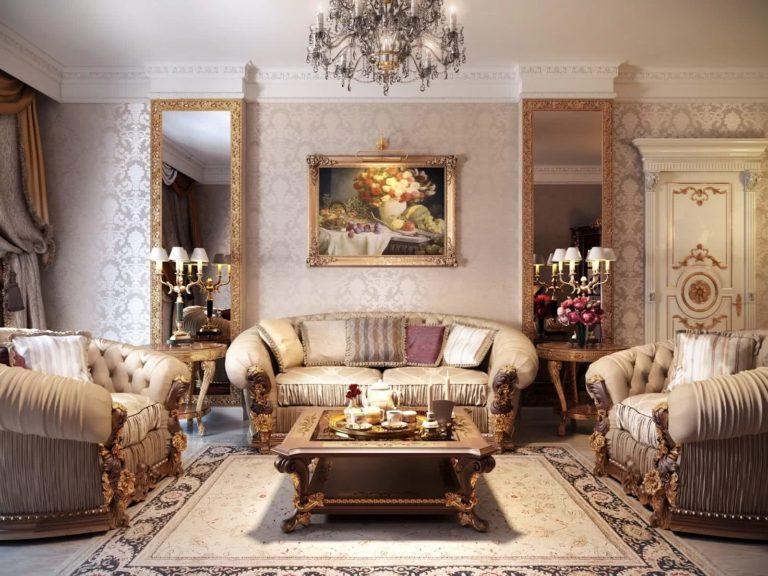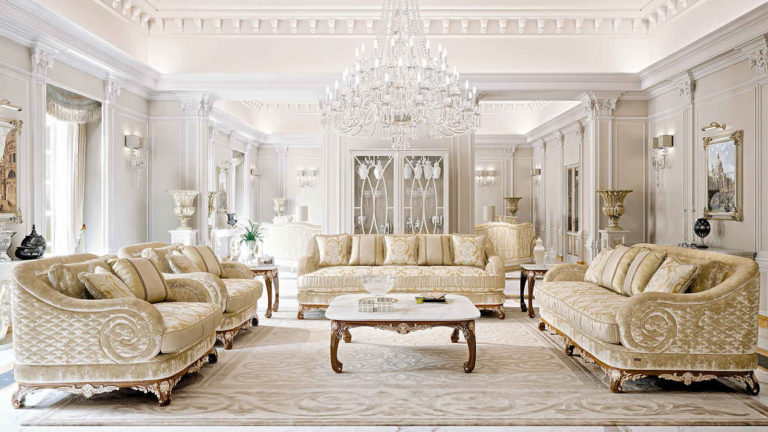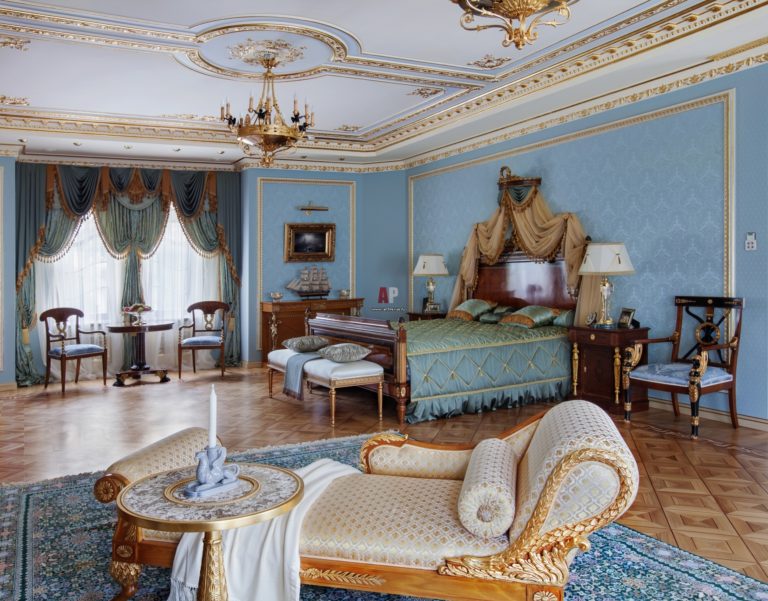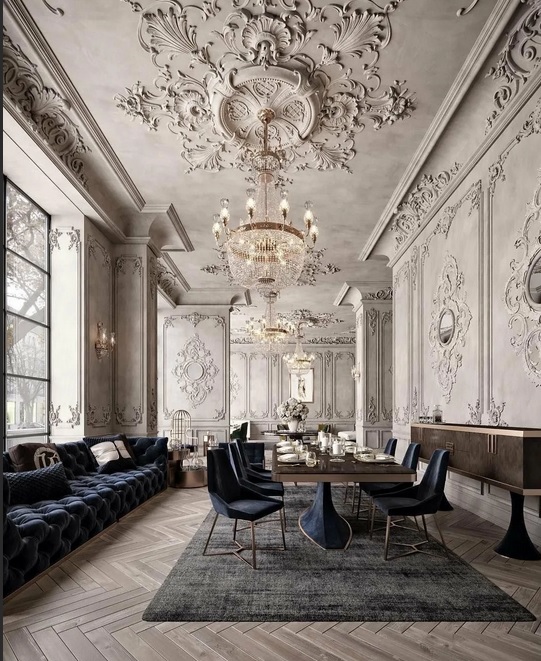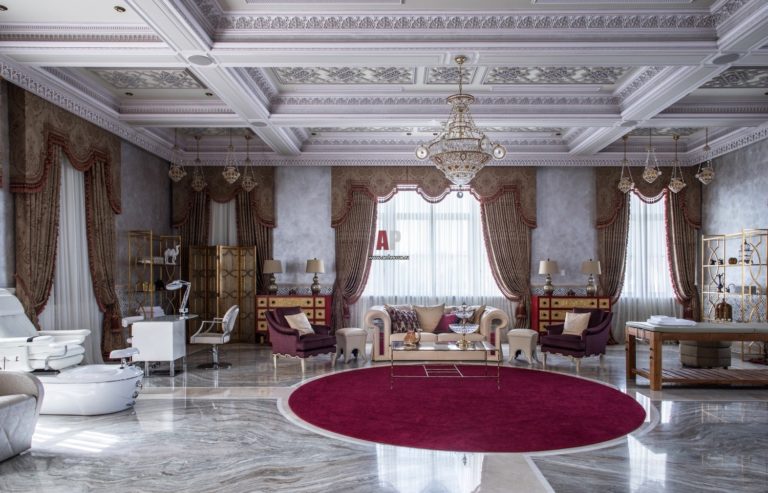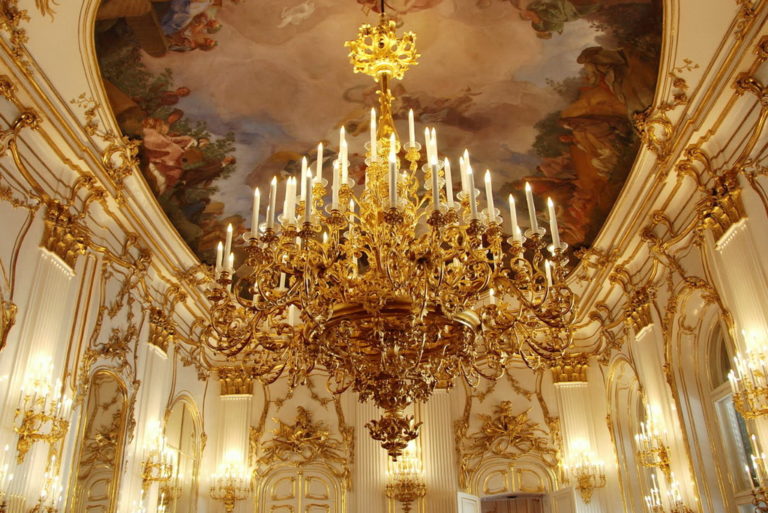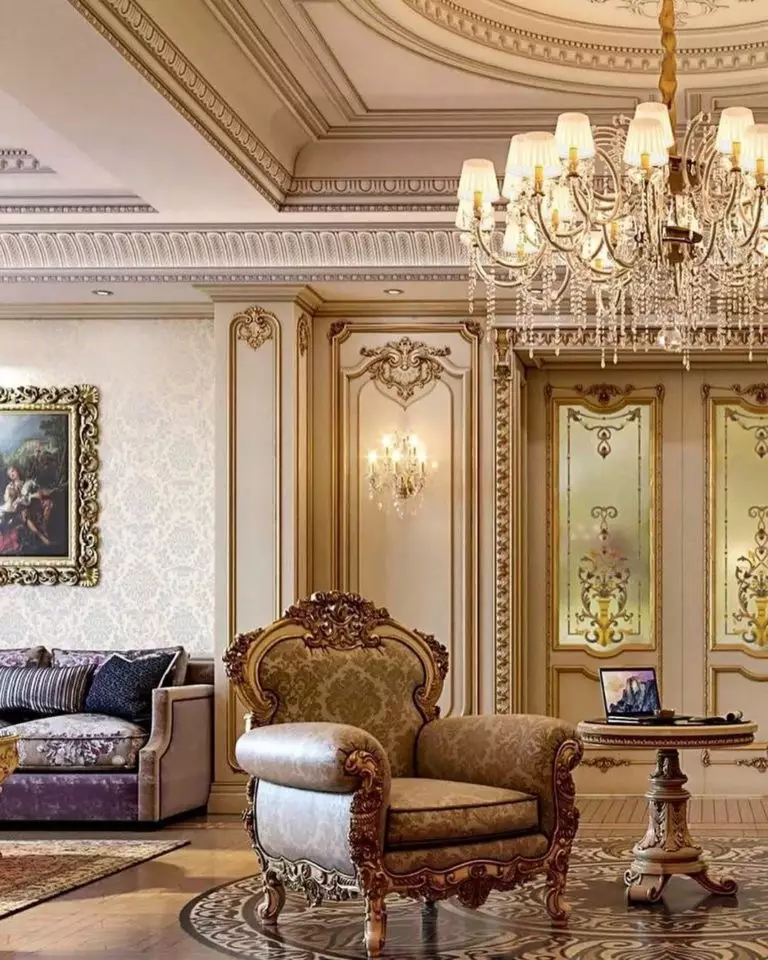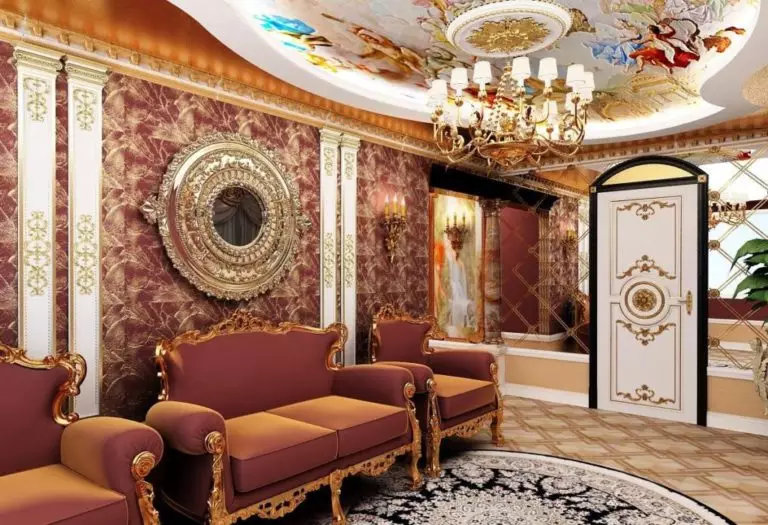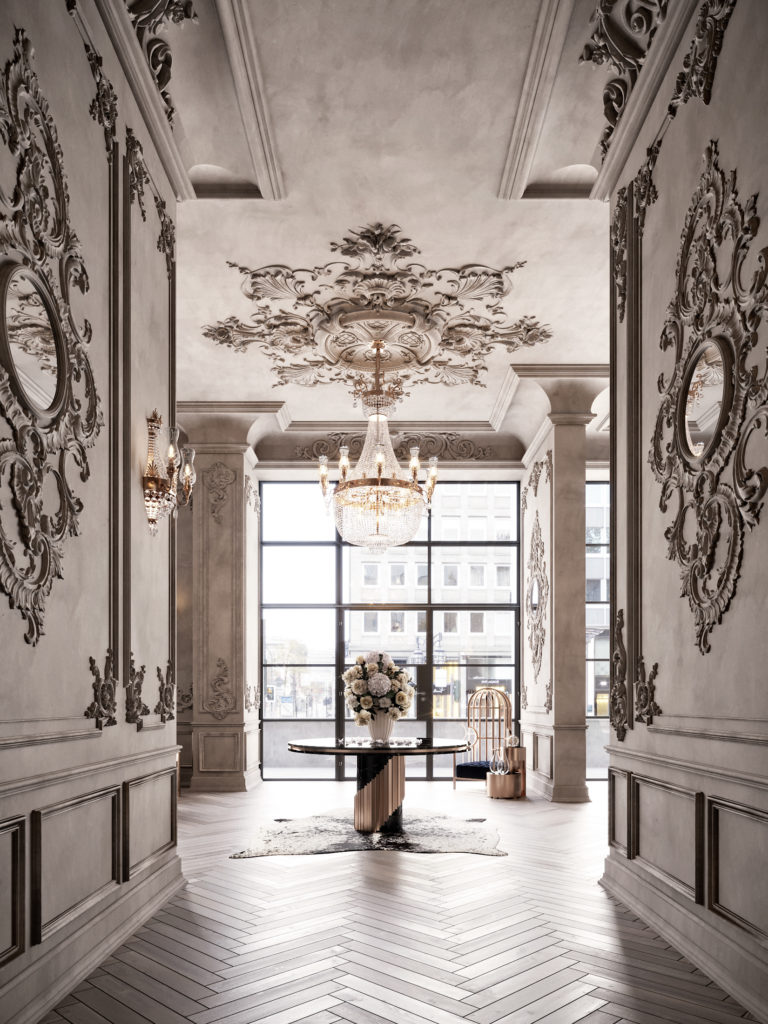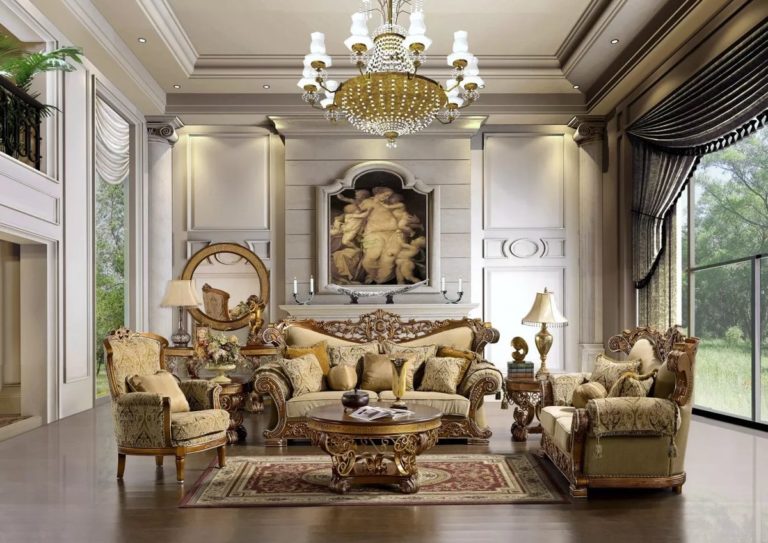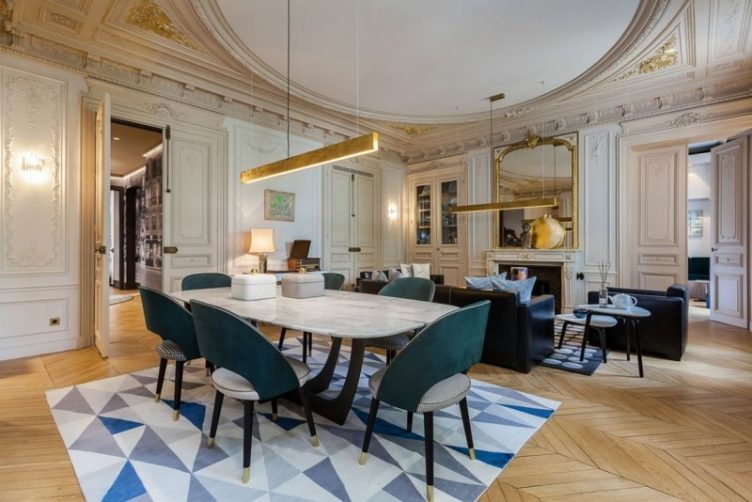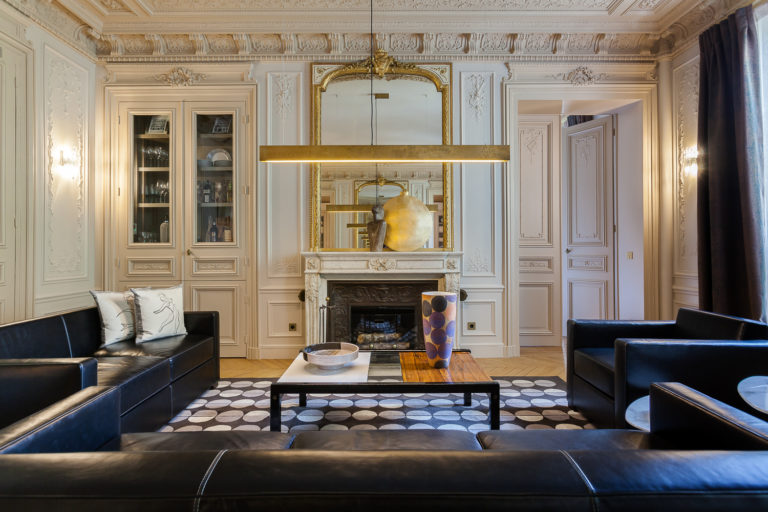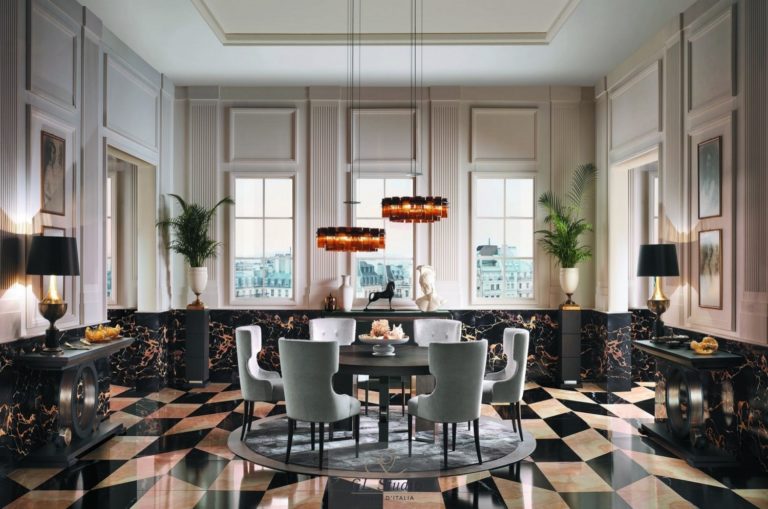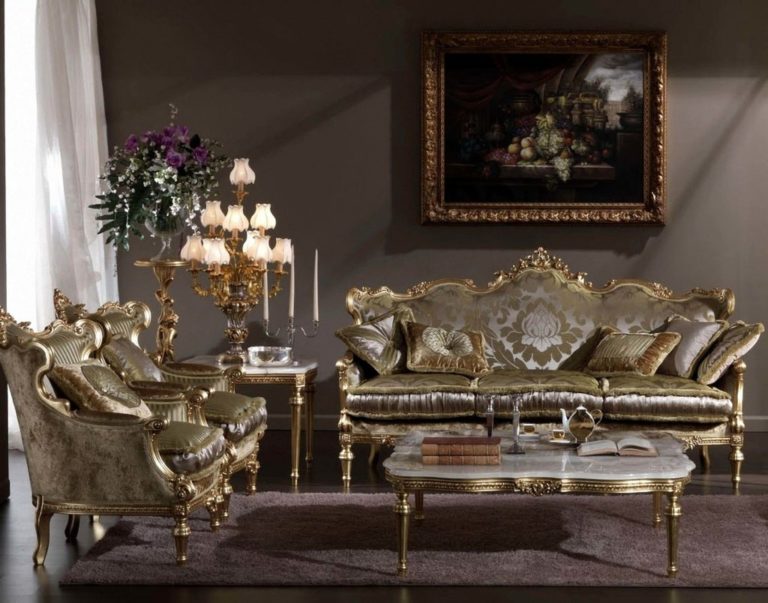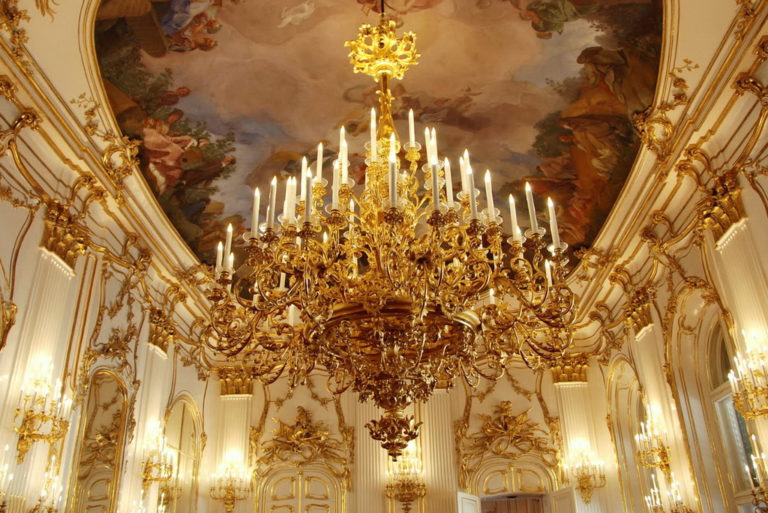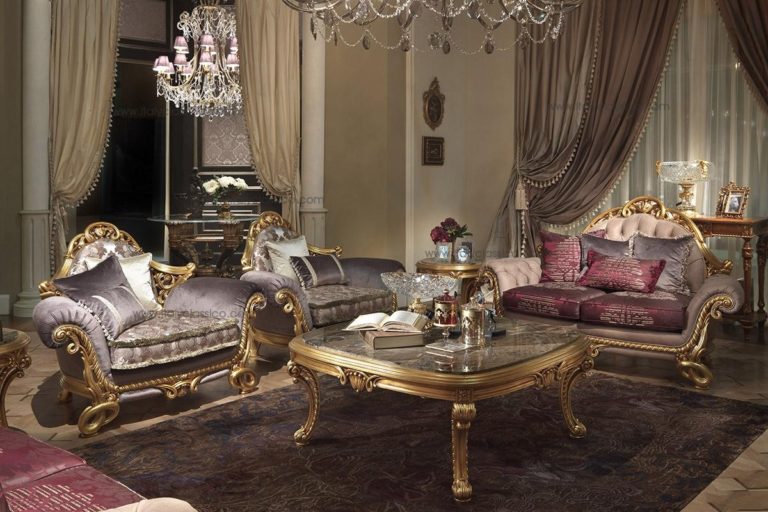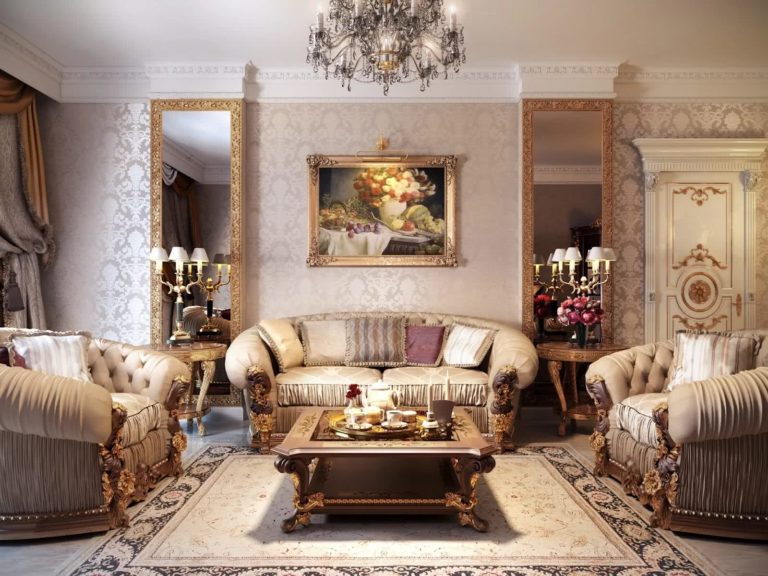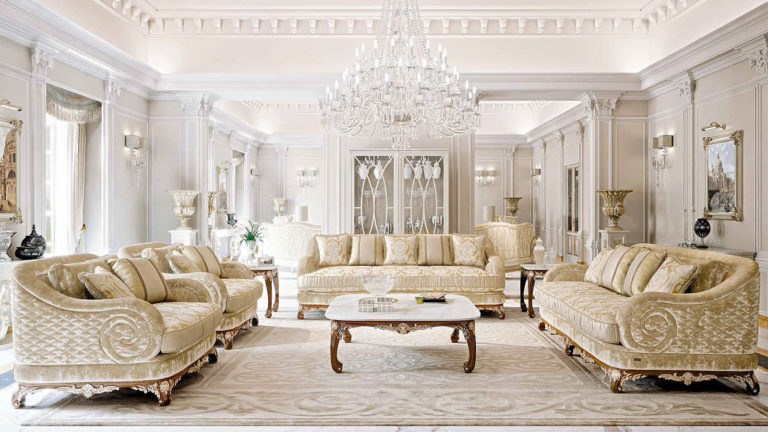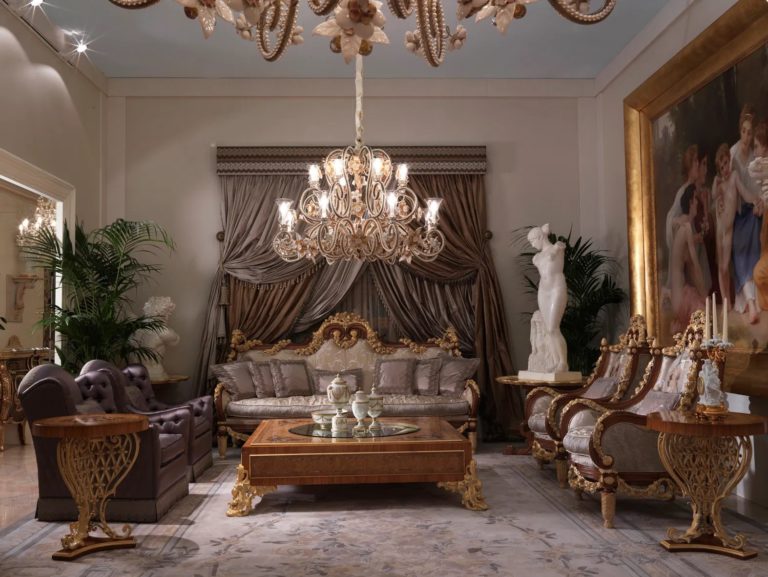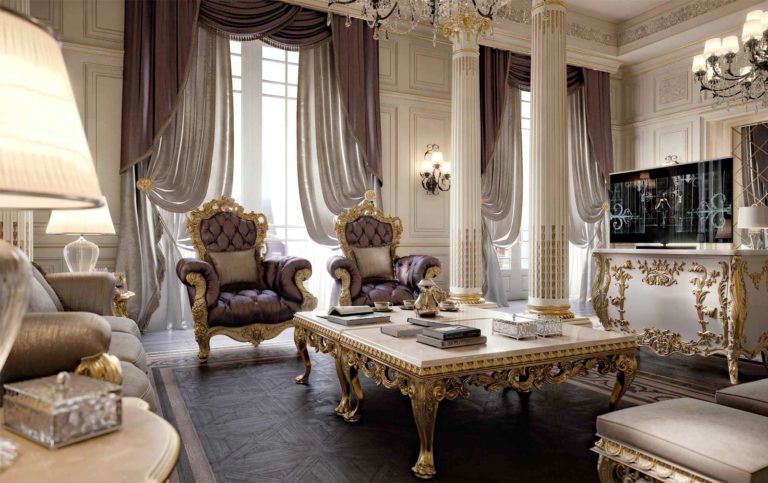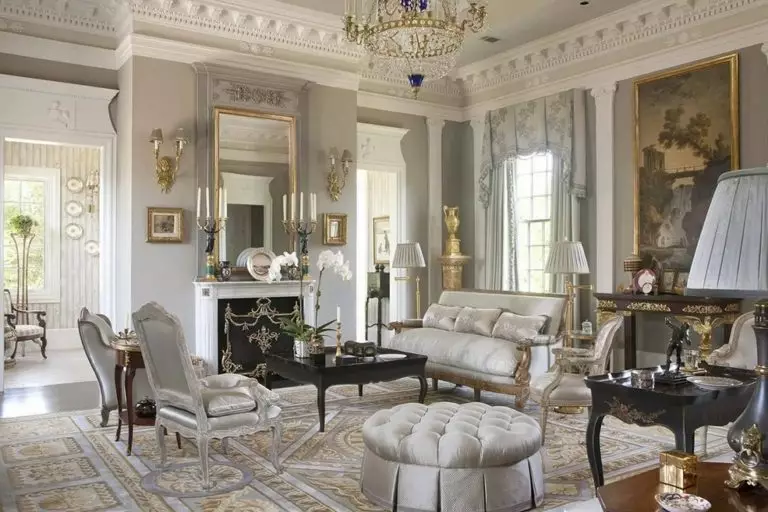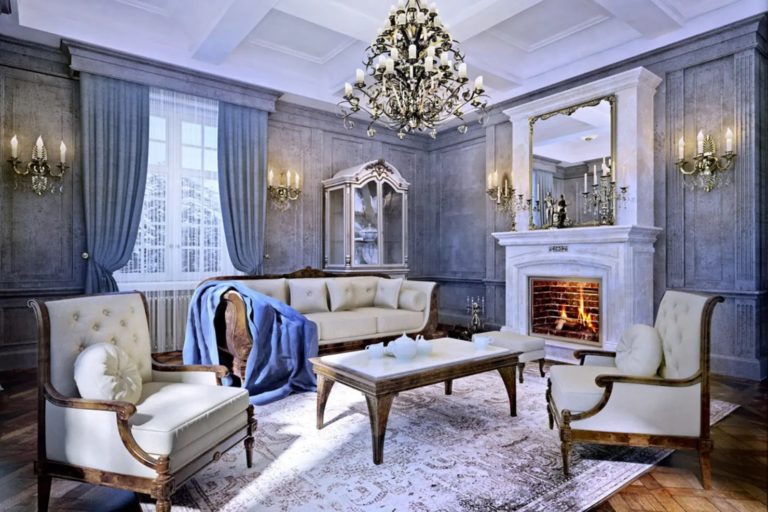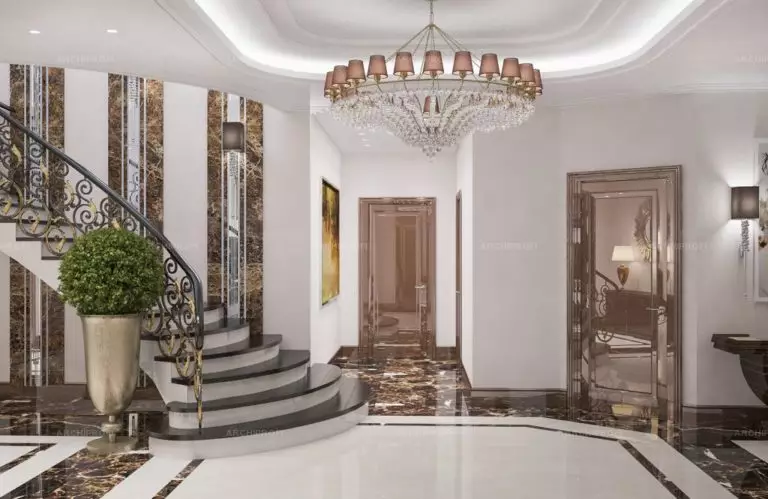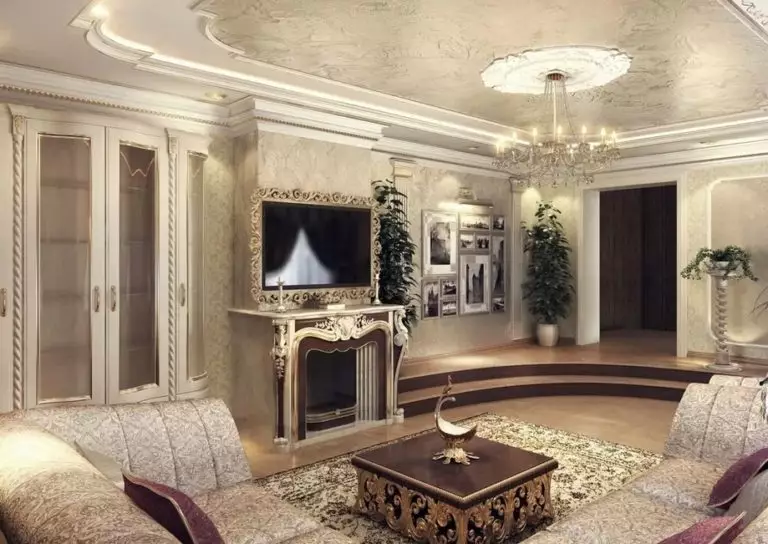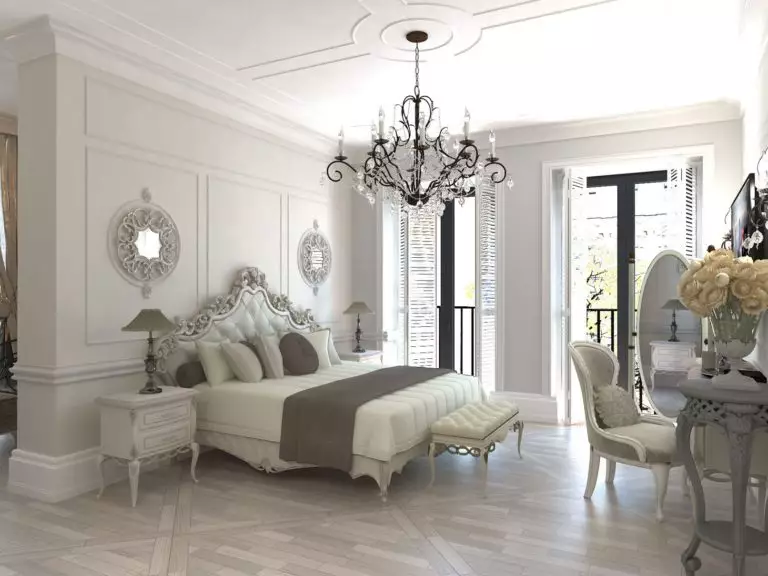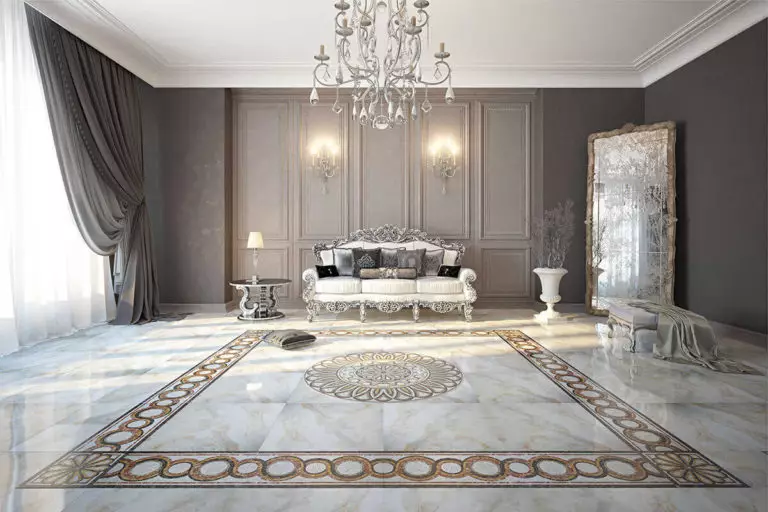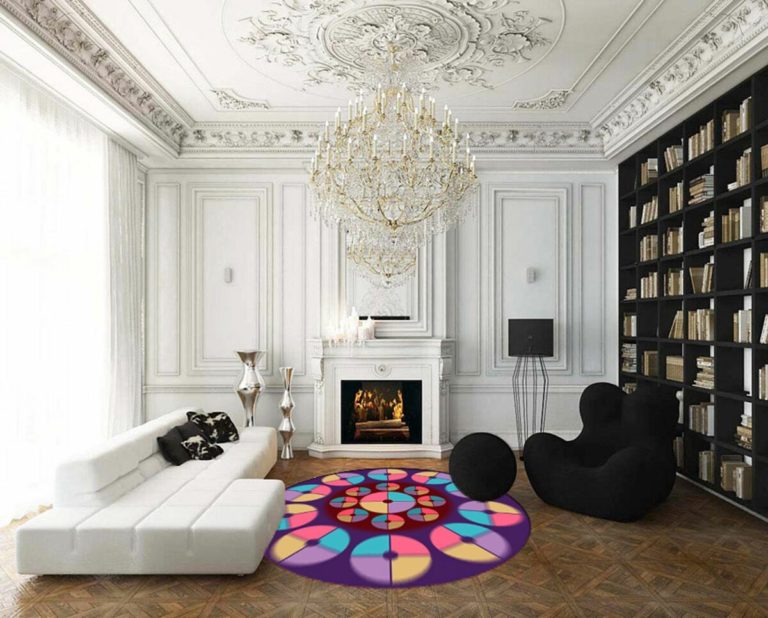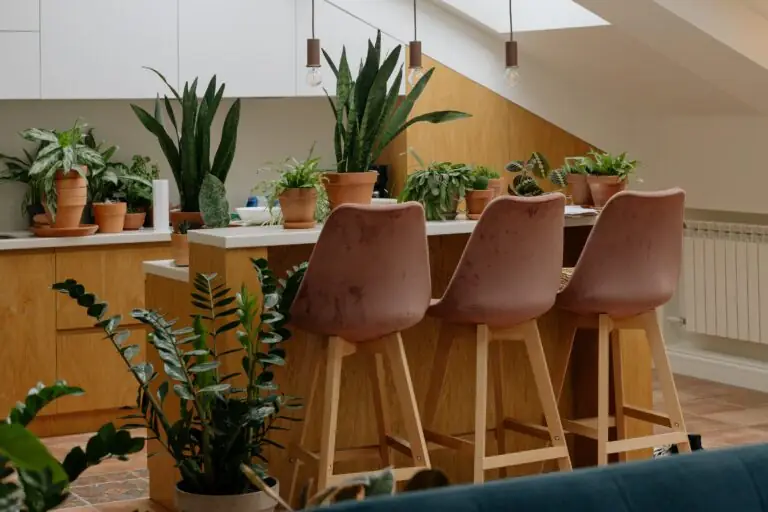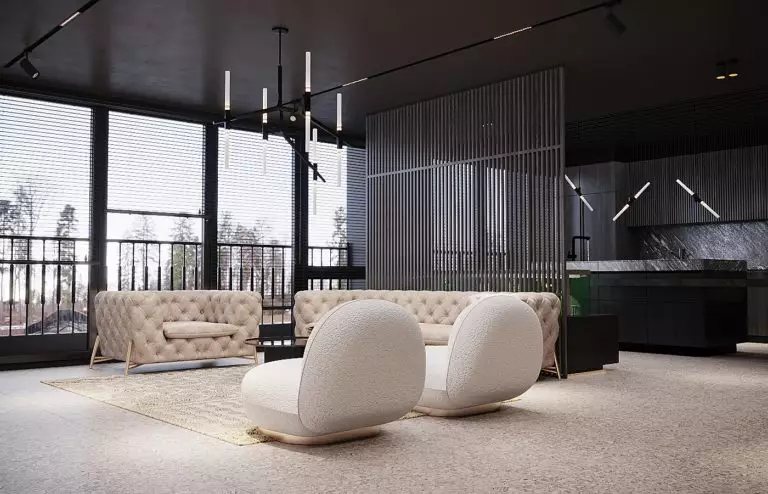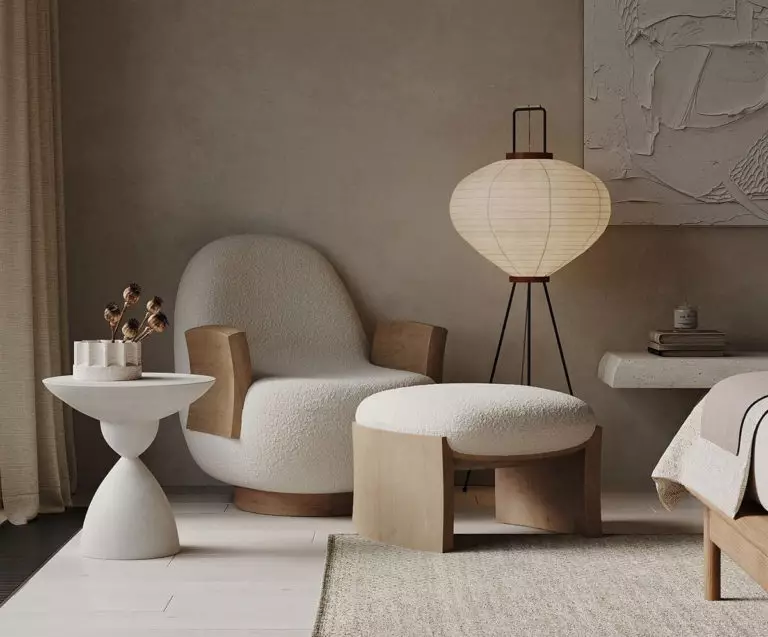Baroque interior design style: features, colors, and ideas
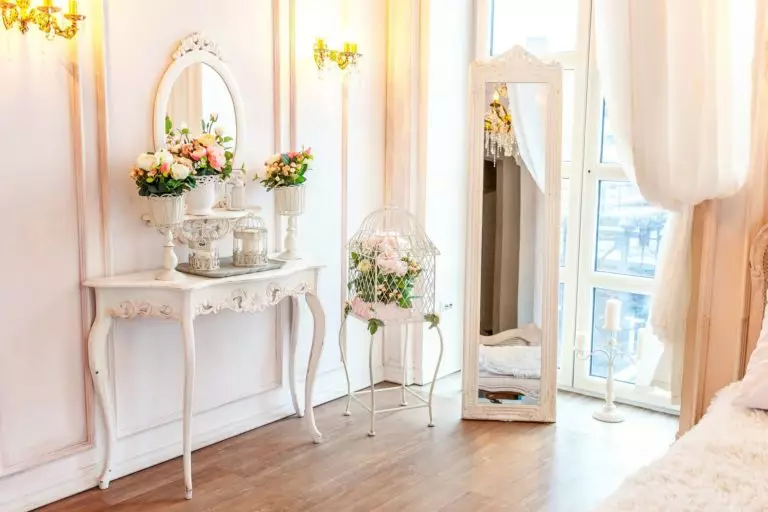
The Baroque style can be safely called one of the most complex and ambiguous in art history. It combines several historical and regional artistic trends of the 17-18th century, the last stages of the flourishing of other styles, expressive and romantic attitude, and a certain imbalance of forms.
The main principles of interior design in the Baroque style:
Walls, floor, and ceiling: all the intricacies of creating a luxurious space
Special attention is paid to the decoration of the walls in the Baroque interior. For decoration, wallpaper with silk-screen printing, patterns, and effective embossing is used. Often they are combined with plaster decorated with moldings, frescoes, mirror inserts, stucco moldings. Together with the floor and ceiling, the walls should be decorated according to the same principle, creating a single harmony of space.
Several successful wall decoration techniques:
The floors are in harmony with the walls and other interior elements. They successfully complement the overall atmosphere of splendor but do not draw all the attention to themselves. As a flooring, laminate imitating wood, parquet, marble, granite, or ceramic tiles imitating marble. You can cover the floors with dense carpets with beautiful patterns and designs.
The majesty of the Baroque style is emphasized by the high painted ceilings, decorated with frescoes, paintings, or stucco moldings. They can be austere straight, vaulted or bewitching spherical. Luxurious crystal chandeliers with suspensions complement the style concept perfectly. Ceilings in baroque interiors are characterized by:
The perfect color palette to create a royal interior
The most popular and recognizable color combinations in Baroque interiors are:
Modern designers often use bolder combinations that always look great in a royal style:
The most varied palette of warm and cold tones is used for upholstery, combined with wall decoration. It is not uncommon to see the same fabric on walls and furniture.
Elegance, chic, and beauty of baroque furniture
You should give special attention to the choice of furniture for the Baroque interior. The ideal solution would be to create the furniture to order according to individual measurements and taste preferences. If you still prefer to buy a finished product, you must be sure of its quality. Furniture in the royal style a priori cannot be cheap. The following decorative elements characterize it:
Large-sized furniture can be supplemented with small poufs, couches, ottomans. They are also upholstered with expensive material with gold threads, complemented with beautiful artistic inserts.
Noble textiles
Lush draperies, tassels, suspensions, fringes are necessary textile details in a baroque interior, which give a feeling of luxury and high cost. Curtains are sewn from velvet, silk, satin, brocade, often decorated with gold thread. As a rule, there is a magnificent lambrequin ornamented with beautiful applique and pompous embroidery.
Previously, curtains in the Baroque interior were sewn from lining fabrics in contrasting colors. Moreover, the doorways were decorated with the same textiles that were used for the windows. Today, decorators use materials that imitate natural textures, such as marble, onyx, malachite, etc.
An abundance of valuable decor
It is essential to choose decorative items to harmoniously and tastefully fit into the overall style concept. In no case should they be lost against the background of expensive finishes and luxurious gilding. Accessories can be found literally in every room of the house. The characteristic baroque decor is:
Besides, this style assumes a rich decor of doors and windows. Double-leaf doors made of natural beech or oak wood are the ideal solution in the Baroque spirit. They can be decorated with inserts made of textiles or colored glass, pompous fittings, gilding, carving, stained-glass windows, and supplemented with columns, coats of arms, pilasters, and pediments.
Palace-style windows are, first of all, curved lines, originality of shapes, graceful handles, and openings such that the sun’s rays illuminate the entire space. The windows are decorated with luxurious curtain rods of intricate shapes, French curtains with embroidery, lambrequins.
Lighting is an essential touch in creating a compelling design
Pompous bronze chandeliers gave the exquisite luxury of baroque interiors with crystal pendants in the form of a drop or leaf, as well as candelabra or candlesticks. Today, such chandeliers can be matched with bulbs of a suitable shape.
To create the ideal lighting scenario in a large room, the lighting is formed in a zonal and height-based manner. So, in rooms with high ceilings, the central chandelier will complement floor lamps, sconces located below. In a spacious hall, it is advisable to arrange several chandeliers with ten or more arms evenly. They are decorated with stucco molding and rosettes.
The light should be diffused and soft; too bright lighting is not welcome. A slight twilight will bring a particular mystery and unique atmosphere to space. Multi-colored lamp shades will help dim the light.
Modern Baroque trends
Baroque style in a modern interior with a competent approach can take a special place among other design directions. This type of interior arrangement is always bold, non-trivial, and unique. So what does modern baroque represent?
Baroque interior design: Conclusions + Photo gallery
A baroque interior, when properly designed, always looks majestic, luxurious, and elegant. It favorably emphasizes the owner’s status but requires delicate taste, high-quality material, and a lot of space.
